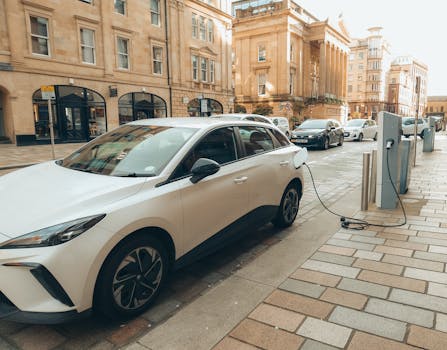
Smart Cities: Urban Trends for 2025
Smart Cities are at the forefront of urban development, and as we approach 2025, it’s essential to explore the latest trends shaping the future of these innovative cities. Smart Cities are designed to provide a high quality of life for their citizens, while also being environmentally sustainable and economically viable. In this article, we’ll delve into the top urban trends for 2025, from sustainable energy to cutting-edge transportation systems.
Section 1: Sustainable Energy and Infrastructure
One of the primary focuses of smart cities is sustainable energy. As the world shifts towards renewable energy sources, smart cities are at the forefront of this movement. In 2025, we can expect to see a significant increase in the use of solar, wind, and hydro energy. Additionally, smart grids will become more prevalent, allowing for more efficient energy distribution and consumption. For instance, cities like Copenhagen and Vancouver are already implementing smart grid systems to reduce their carbon footprint.
Another crucial aspect of smart cities is their infrastructure. In 2025, we can expect to see a significant investment in smart infrastructure, including smart buildings, roads, and public transportation systems. These infrastructure projects will be designed with sustainability and efficiency in mind, using materials and technologies that minimize environmental impact. For example, the city of Singapore is currently developing a smart transportation system that uses artificial intelligence to optimize traffic flow and reduce congestion.
Section 2: Transportation and Mobility
Transportation is a critical component of smart cities, and in 2025, we can expect to see significant advancements in this area. Electric and self-driving vehicles will become more widespread, reducing greenhouse gas emissions and improving road safety. Additionally, smart traffic management systems will be implemented, using real-time data and analytics to optimize traffic flow and reduce congestion. Cities like London and New York are already investing in smart traffic management systems to reduce congestion and improve air quality.
Furthermore, smart cities will prioritize pedestrian-friendly and bike-friendly infrastructure, promoting a healthier and more sustainable lifestyle for their citizens. This will include the development of green spaces, bike lanes, and pedestrianized zones. For instance, the city of Barcelona is currently developing a network of bike lanes and pedestrianized zones to reduce traffic congestion and improve air quality.
Section 3: Technology and Innovation
Technology and innovation are at the heart of smart cities, and in 2025, we can expect to see significant advancements in this area. The Internet of Things (IoT) will play a crucial role in smart cities, with sensors and devices collecting and analyzing data to optimize city operations and improve the quality of life for citizens. For example, the city of Tokyo is currently using IoT sensors to monitor and manage its waste management system, reducing waste and improving public health.
Artificial intelligence (AI) will also be used to analyze data and make predictions, helping city officials to make informed decisions and improve city services. Additionally, blockchain technology will be used to secure data and ensure transparency in city operations. Cities like Dubai and Sydney are already investing in blockchain technology to secure their data and improve transparency.
Section 4: Citizen Engagement and Participation
Citizen engagement and participation are critical components of smart cities, and in 2025, we can expect to see a significant increase in citizen involvement in city planning and decision-making. Smart cities will use digital platforms and social media to engage with citizens, gather feedback, and provide transparency in city operations. For instance, the city of Paris is currently using a digital platform to engage with citizens and gather feedback on its urban development projects.
Furthermore, smart cities will prioritize citizen-centric services, providing citizens with access to information, services, and opportunities. This will include the development of digital services, such as online portals and mobile apps, to provide citizens with easy access to city services and information. Cities like Melbourne and Toronto are already developing digital services to provide citizens with easy access to city services and information.
Section 5: Conclusion
In conclusion, smart cities are at the forefront of urban development, and as we approach 2025, it’s essential to explore the latest trends shaping the future of these innovative cities. From sustainable energy to cutting-edge transportation systems, smart cities are designed to provide a high quality of life for their citizens, while also being environmentally sustainable and economically viable.

